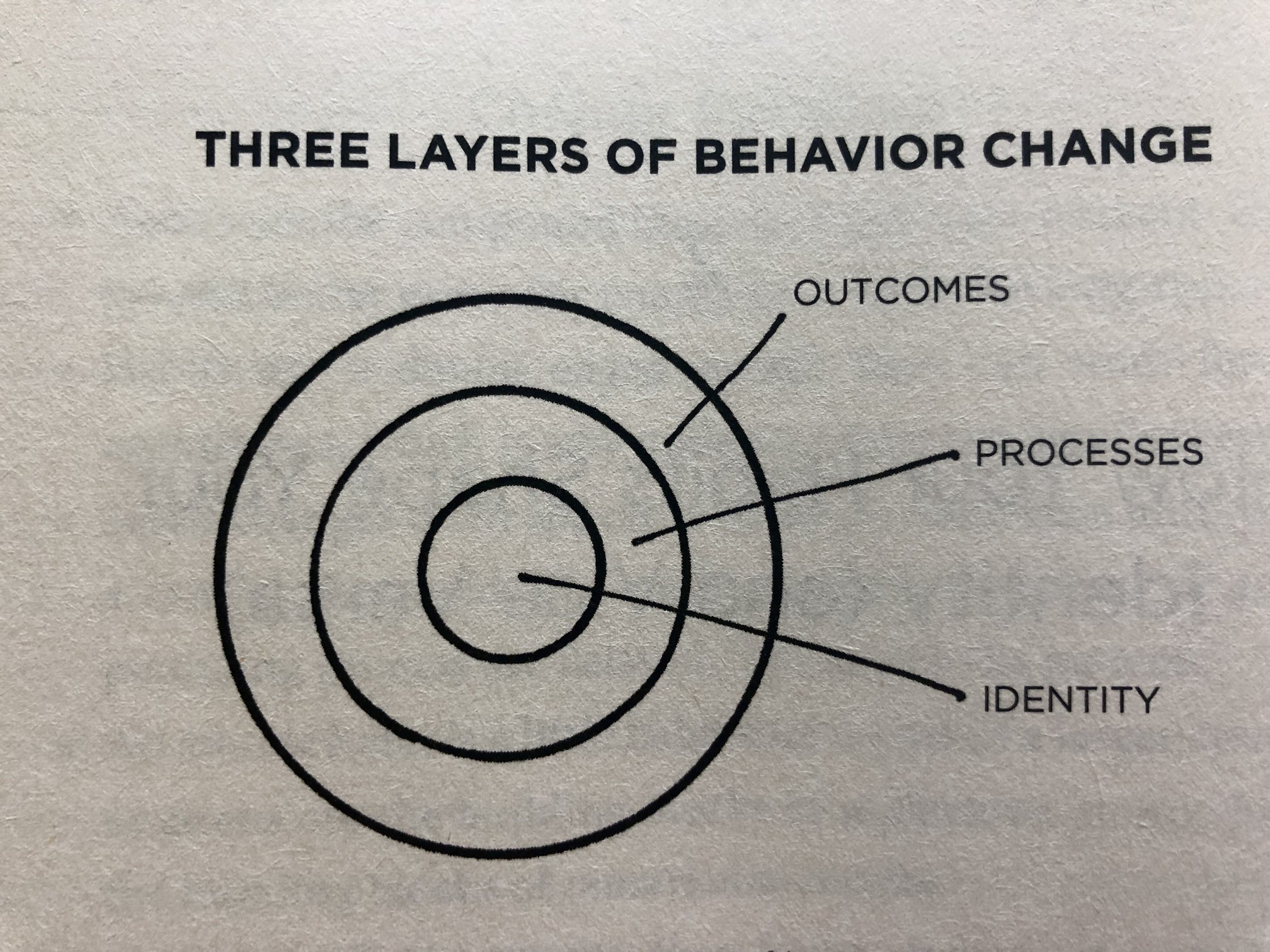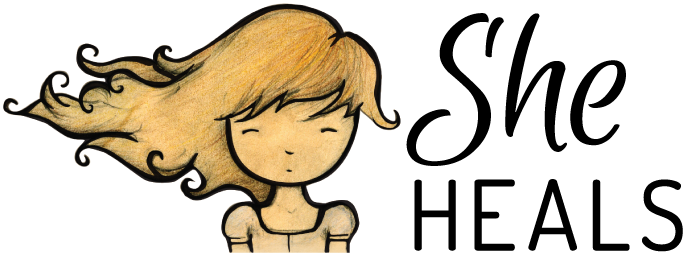is more powerful than our goals
Anyone focusing their attention on the coaching, wellness, or self-help industries can see how ubiquitous goal setting is for all of the people involved. As someone who has navigated these industries for years as both a consumer seeking greater health and as a practitioner helping clients achieve greater health, I can tell you that setting goals is as common as it is misunderstood. In this article, I address what makes goals achievable, what drives human behavior, and why using habit change and value-based identity is the best route for meeting our goals long-term. I’ll start by offering a personal example from my own life on the impacts identity has on our goals.
Before choosing to narrow down my focus and go all-in with my nutrition career, I tried on several career hats, along with their associated identities. The most oddly fitted career hat, by far, was in the work that I did as an affiliate marketer a few years back. By affiliate marketing, I’m not referring to the paid partnerships entrepreneurs form with brands in their industry, but more so that I began to train and build a business solely around online affiliate marketing. I began building an identity as a marketer — or at least I tried to for a while.
I was working overtime as a postpartum doula in San Francisco at this time and barely had space for friends, let alone energy to build something with all the years of health training I’d acquired. I didn’t feel like I owned ANY of my time and it was starting to wear me down and wear me down fast. I found myself wanting to run away from my life and create something totally new for myself. I wanted a creative agency over my days and the freedom to choose my work environments. These marketers spoke to all of this and gave me a solution: create passive income through affiliate marketing.
So I jumped into the deep end of the marketing pool and spent all my evenings and weekends studying affiliate sales funnels and marketing psychology. I began networking with a global community of affiliates, attending marketing seminars and tried creating an identity around all of this. But the identity never quite stuck, therefore all the goals I’d set for myself as a marketer never quite stuck either.
In the end, I only had a few successes with my marketing strategies and I wasn’t consistent enough to drop my birth work contracts and go online full-time as a marketer, let alone make the six figures the marketers were selling us on as the goal.
If you look at my marketing goals objectively, you’ll see that they weren’t unattainable. Yes, there was a steep learning curve at first, yet nothing that I couldn’t conquer with the hours I was already putting in.
The goals were not the obstacle, the identity I needed to align with was the obstacle.
If you’ve ever spent time within the world of affiliate marketing, you’ll see that it can be filled with a lot of desperate people, many of whom want out of their current life situations. Goals are a HUGE part of making this happen for them and terms like “productivity,” “time is money,” and “hustle” quickly become the patented slogans by which many marketers live.
Of course, there are plenty of rad people within the world of affiliate marketing, just as there are rad people almost everywhere, and I was incredibly blessed to connect with some of these rad humans and call them my friends to this day. There were also a lot of personal development insights I gleaned from this period and have carried with me into my health career. I also made enough affiliate sales as a side hustle to pay off the remainder of my nutrition school debt and get a small taste of what residual income can felt like, an experience that opened my eyes for the first time to what’s possible as an online entrepreneur.
But that is where affiliate marketing as a career ended for me. My goals as a marketer deteriorated after only a year and I redirected my focus back to my health studies and nutrition business goals — where my identity is most aligned.

What are goals and why do we set them?
If someone asked you what a goal was, you’d have no problem giving them a quick response. Most of us have participated in goal setting and worked towards something exciting or important in our lives. But after a few years of studying coaching, which emphasizes behavioral change, it’s clear that behavior change isn’t as simple as setting a goal and working towards its fruition.
In fact, I’d say most people struggle immensely with both setting goals and with reaching them, for reasons I’ll explain below.
Firstly, as a refresher: Goals are the result or achievement toward which effort is directed. In other words, goals set our direction. Goals are an endpoint that represents a desired feeling, experience, and identity we’re seeking to emulate — whether for a day or for the long-term. Setting goals is so ubiquitous to modern living that we often associate any growth or success in life with this process, at least superficially so.
If we have a goal to lose weight, we’ll set a time-frame and a course of action each day to get us to this desired weight. If we want to move to a new location, we set a date for that move and begin to save, plan, research, etc to prepare us for a successful move — usually using a book or formula created specifically for whatever goal we’re working toward.
Goals are useful in that they give us reasons to change our behavior, they give our lives purpose, and they often tell us indirectly a lot about our values. They can inspire us to become better versions of ourselves and to take needed action in our lives where we’re struggling. They also require that we change our daily habits, which I’ll go more into in a minute.
But first, if goals are so great for us, why do we so often fail at meeting them??
The limitations to common goal-setting
I learned years ago that it’s easy to set goals and therefore, everyone does. Most people in competitive arenas live their lives by goals; to win a championship, medal, or a tournament, for instance. And yet, only a few competitors will meet these goals and earn these rewards. Two people with the same goals and potentially even similar lifestyles may have very different outcomes, despite the fact that their goal was the same.

When it comes to goals, beginning is much easier for me. Following through is much harder.
This is due in part to the common mistake we make of focusing on the wrong things and trying to change in the wrong ways in order to meet our goals. The process that we use to get us moving in the direction of our goals is often underemphasized or lacking in most goal-setting schools of thought. By process, I’m referring to the daily behavior changes required of us and the level of personalization that’s also needed in order to make these changes stick for us as individuals over the long-term. Most people are capable of changing their behaviors for a few hours or days, but most of our goals are reached through longer-term changes.
I see alignment as an essential component to success, as it’s centered around growing our self-awareness and getting clear on what we stand for– even in periods of change and growth. Alignment means placing ourselves and our daily choices under a microscope and asking ourselves: “Is this behavior moving me in the right direction, and if not, why?”
When setting goals, we’re commonly taught to fixate on the results we seek instead of focusing on the habit-based process we’ll rely upon to get us there. The habit-based process is where the magic happens and this is developed daily by taking one small step after another. Obviously, we still have an end goal, but a more effective focal point are those small steps which add up over time. Our habits are what dictate these steps.
We use habits to attain our goals, so what’s up with habits?
Habits are an acquired behavior pattern regularly followed until it has become almost involuntary, or, a dominant or regular disposition or tendency; prevailing character or quality. For simplicity’s sake, I chose two of the five listed definitions, but the term addiction also works, as its often used interchangeably with the habit when referring to drugs or alcohol. What differentiates a habit from a deliberate behavior like giving a lecture or learning a new equation is that habits are executed on autopilot. Our brain saves a shit ton of energy by setting up as much of our behavior on autopilot as possible. Habits are the result of this energy-saving autopilot state and they underpin the vast majority of our waking hours.
If we understand and master our daily habits, we can design the personalized process I mentioned above to get us the desired results we seek with our goals. The crucial role habits play in our daily behaviors and overall results in life cannot be overemphasized enough. I recently finished the book Atomic Habits, by James Clear, which blew my mind open on all things habit:
“Habits are the compound interest of self-improvement. The same way that money multiplies through compound interest, the effects of your habits multiply as you repeat them. They to make little difference on any given day and yet the impact they deliver over the months and years can be enormous. It’s only when looking back tow, five, or perhaps ten years later that the value of good habits and the cost of bad ones becomes strikingly apparent.”
In the book, he outlines what he calls The Four Laws of Habit Change:
- Make it Obvious
- Make it Attractive
- Make it Easy
- Make it Satisfying
Within these four laws, he uses research within fields like behavioral psychology and evolutionary biology to form a framework for understanding and changing human behaviors in a small, yet powerful ways each day. The whole purpose of the four laws is to help us understand the mechanisms driving our behavior and to tailor our choices around to this understanding for greater success. All too often we see shallow representations on what drives humans towards goal achievement, with a big emphasis placed on things like hard work, grit, willpower, and sacrifice. Although these are important qualities, they’re still only offering a surface-level understanding of what drives human behaviors and how change works.
Of course, some of our habits are helpful and don’t need to change, but when it comes to healing from chronic illness and destructive behaviors like food and substance addiction, we’ll be shocked to realize how many habits we have which deter or even harm us each day. Once we realize this, having a solid process in place to assess and modify our daily choices offers practical steps and a great source of relief to so many who have been beating themselves up for years over their failed attempts at change.
As a species with a tremendous drive towards self-identity, when we begin seeking alignment, we’ll start to see how our daily habits shape our identity and vice versa. Since we all want to love who we are, this can be a powerful incentive for habit-change! It also provides opportunities for us to grow in self-awareness and objective reasoning as we dial in our daily habits towards greater alignment with our identity.
Why identity-based habits are so powerful
The greatest example I’ve found for changing daily habits is one James outlines in his book, known as Identity-Based Habits. Using this system, we’ll look at behavioral change as an onion with three layers. The most superficial layer of this onion is based on the outcomes we wish to change; the goals themselves. This is the layer most people focus and get hung up on, but is also the layer least linked to long-term change.

Identity is the deepest place to start changing behavior
The second layer is the process by which we enact changes and strive towards the goals. This includes changing our daily habits, routines, environments, relationships, etc. This is a more effective layer to be working on because it deals directly with our habits and all that’s holding them up. This layer looks at every little thing contributing to the automated dance that is our daily life.
However, the most effective layer and the one that changes us from the roots is working at the level of our identity. This is the layer where we’ll be examining our core values, beliefs, biases, fears, biological limitations, and the dreams we often bury. These all make up the fabric of who we identify as and these must be aligned with our goals if we ever wish to meet said goals.
Who we experience ourselves to be each day is the single greatest contributor to our choices and to the trajectory of our lives.
It is the reason so many of us fill our time escaping into entertainment and addiction; on a deeper level, we don’t like the experience we’re having of ourselves and have never been given any tools or opportunities to see or admit to this. When making daily choices from this place of avoidance, you can see why it might be so hard to meet goals that others make look so easy when they’re living as the person they love to be.
I believe that simply having it on our radar that we have the option to choose our own identity in this life is enough to start our entire habit-changing process. It is a completely new concept to most of us who have grown up in a world where choosing our own careers is only a few decades old — especially for women and historically underprivileged populations. If this is a totally new concept to you, it may take some time and work to become familiar or comfortable with it before you can apply it to your habit-change process. Once it feels real for you and you’ve decided that this is a process you’d like to adopt, there are a few practical steps that I outline in my eBook around how to apply it to your life.
I won’t go into the full process of identity-based habit change in this article, however, I do want to give you some action steps that you can apply immediately to areas you wish to change or to goals that you are struggling to make progress around. First of all, get yourself a notebook or piece of paper, as I prefer to have my clients do these practices by hand. On a fresh piece of page, take your time and write out a list of all the values that you associate with the most. If you feel unclear on what values are, specifically, James has an excellent list here that you can refer to. Once you have written out as many values as you feel resonant with, whittle that list down to no more than six! This will be your core values list — the values that will make up your chosen identity.
If you’d like to assess how aligned you currently are with these new values and chosen identity, you can track your habits, which James explains in detail here.
It might all sound complicated or like a lot of work, but I assure you, it’s quite simple and will begin to come natural to you the more that you engage and prioritize this process. I am a visual learner, so I keep post-its on my wall with my values and habits I’m seeking to ingrain. I also have my core values at the bottom of my About Kymber page on my website for others to see what I stand for. Every few years I do an assessment to see if my core values are still aligned with who I am and what I stand for and if they’re not, I change them. So far, they’ve been pretty damn consistent.
The role identity played in my own health journey
When I was healing my relationship to food and building a daily habit of eating for satiation and health instead of out of addiction or compulsion, I didn’t set a goal of eating in moderation. I also didn’t set any goals around eating certain foods more than others or of no longer eating while emotional or tired. What I did do was create a system for relating to food which was based on becoming someone who doesn’t overeat.
I became someone who values nutrient-dense foods over modern hyper-palatable ones and someone who wants to feel emotionally and physically strong. I became someone who values stability over the dopamine rushes I’d get from binging. In creating this identity, my diet naturally evolved into what it is today: a nutrient-dense, animal-based diet with enough flexibility to feel free, yet an overall emphasis on strength and stability.
When aligning this identity with my choices, it became natural to pay attention to which foods left me feeling crazy, unstable, or addicted, and which foods left me feeling stable, satiated, and strong. This mattered more and more as my chosen identity as a stable, strong, healthy person began to solidify for me over time.

What we eat has more association with our identities than ever before!
The identity piece was huge for me in healing my relationship to food partly because I had to make some scary commitments to myself in the process. I had to commit to being someone who would eat an animal-based diet when the noisy modern world is yelling “plant-based!” I chose to advocate for this way of viewing health and consumption, despite the clients I lost and the misunderstanding I received from people who view animal consumption as negative.
Aligning our identity with our daily habits is the most effective long-term strategy for behavior change and healing. However, it does come with growing pains and uncertainty. We might be called to change who we spend our time with, how we prioritize sleep and food choices, the topic of conversations we’re willing to engage in, and how we’re willing to make our money.
I also find it liberating as hell to see that our identities still remain flexible as they’re composed of many moving parts (habits) which can be changed when needed. I don’t believe creating a fixed identity is useful long-term and I’m all about long-term wins. However, I do believe that the more aligned we can become in who we are and what we stand for, the easier it will be to control the systems which underpin our success in life and the less our underlying values will change.
Aside from going out and reading James’ book, I linked in above, my takeaway suggestion for you is to get clear on these things:
- Who do you want to be?
- What are your core values which will make up this identity?
- What are the daily habits you will need to adopt or remove in order to live in alignment with this person?
You’re free to share your thoughts in the comments below. How has the concept of identity-based values impacted your life and have you used this in meeting your goals?





